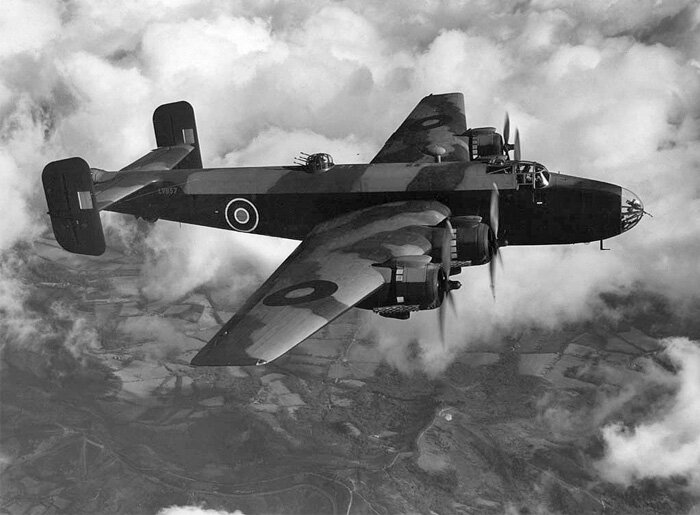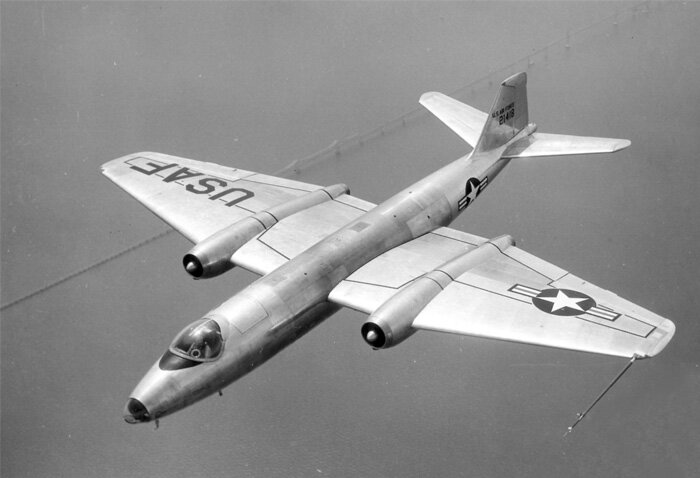AVRO WHAT?
The name, sight and sound of the powerful, piscine and stingray-like Avro Vulcan, after all these years, still generates a thrill in my gut that starts somewhere down low below the belt and rises up to fill the heart. The chest-pounding concussion of its four Bristol Olympus engines was, to my young mind, a thunderous warning from the gods to think twice about messing with the British. Its name was so perfectly in sync with its role and its powerful beauty—Vulcan—the hammer-wielding Roman god of fire and volcanoes. The name Vulcan brought to mind the flaming apocalypse of thermonuclear warfare and the power of man to destroy his world—in an elegant way. Its power over the active imagination of a young boy survives to this day. The god-like Vulcan still resides in the pantheon of the most beautiful and iconic aircraft ever built—something the British are particularly good at as witnessed by the Spitfire, Mosquito, Lightning and Concorde. Its appearance at the beginning of the James Bond film Thunderball cemented its place as an icon of the Cold War and in the imaginations of pre-pubescent boys.
As late as 1975, I witnessed the flight of a Vulcan at the Ottawa Air Show, held at Uplands when that base was still a major and very active RCAF Station. I can still see its broad back glinting like burnished armour in the flat sunlight of that late spring day. Its demonstration that day would have been the perfect time to be a pickpocket, for there was not a single face among the throng that was not turned toward this thundering elasmobranch. Everything about the Vulcan evokes awe, not the least of which is its dramatic name. But, Vulcan was not the name first put forward to the Air Ministry by Avro. Not even close.
At the time of the construction of the first prototypes, the Royal Air Force had a long-standing tradition of naming their bombers after cities, dating back to the beginning of the Second World War. Many of these aircraft have come to stand for the finest men, women and machines that the Royal Air Force ever put into harm’s way—the mighty Handley Page Halifax and Avro Lancaster. While the cities that these aircraft were named after evoke little imagery in the minds of us Canadians, their names will forever represent the courage, tenacity and sacrifice of more than 10,000 Canadian men who went to war in them and did not return.
The famous (some say infamous) Avro Vulcan prototype VX770 (with four Rolls-Royce Avon engines) showing off the breathtakingly beautiful and futuristic shape of the Vulcan’s massive delta wing. VX770 was equipped with the early straight-edged leading edge wing. Everything about this aircraft would make it the darling of the V-force bombers, inspire the nation and keep it flying as a bomber well into the 1980s. VX770 had a catastrophic wing failure during a climbing turn at an air show at RAF Syerston in 1958. The crew of 4 was killed as were three on the ground. Photo: Avro
At the time of the construction of the first prototypes, the Royal Air Force had a long-standing tradition of naming their bombers after cities, dating back to the beginning of the Second World War. Many of these aircraft have come to stand for the finest men, women and machines that the Royal Air Force ever put into harm’s way—the mighty Handley Page Halifax and Avro Lancaster. While the cities that these aircraft were named after evoke little imagery in the minds of us Canadians, their names will forever represent the courage, tenacity and sacrifice of more than 10,000 Canadian men who went to war in them and did not return.
When the Royal Air Force took receipt of more than 80 Boeing B-29 Superfortresses in the early 1950s, they chose to rename them Washingtons after the American capital city in honour of their American roots. By the time the last of the Washingtons were being flown back to the USA, A.V. Roe and Company (Avro) was contemplating a new name for their new and massive delta-winged heavy jet bomber. Having flown for the first time in August of 1952, the new aircraft, temporarily called the Avro 698, did not yet have a name when it flew at the Farnborough Air Show the following September. Avro, thinking along more traditional lines, had the name of a city in mind—Ottawa. I kid you not! Avro of Great Britain strongly recommended the name of Canada’s sleepy capital city as a way of honouring the company’s corporate connection with the über-creative Avro Canada which, by this time, was developing some extremely advanced aircraft designs—the Avro Jetliner (the world’s second jet airliner after the Comet), the Avro Canuck all-weather interceptor and the truly magnificent Avro Arrow.
Ottawa around the time of the Avro Vulcan’s development—logging industry and Parliament in one place. Photo: Malak Karsh
The two Avro Vulcan prototypes (VX770 and VX777) fly in formation with four Avro 707s, the Vulcan’s proof-of-concept progenitors. This was at Farnborough in 1953, by which time the name Ottawa was forgotten—thankfully. Photo: Wikipedia
While I am extremely proud to call myself an Ottawan, I am the first person to say, “What were they thinking?” Ottawa was in those days a small city of some 280,000 civil servants, lumbermen, railroad people, office workers and their families. Though it was on Moscow’s target list to take receipt of a fistful of nuclear warheads, it was as far from representing the near-supersonic, fire-breathing white chariot of the apocalypse as, say, a squirrel might be. Like the Spitfire, this new flying nemesis of communism would need a name that inspired awe and fear. Ottawa was just not going to do it. As much as we Ottawans appreciate the honour, were are forever grateful (as is all of Great Britain I am sure) that Avro was convinced to let that name drop.
The British weekly magazine Flight threw out some ideas including Albion, Avenger, Apollo and Assegai (not a great name, but apparently a long, iron-tipped spear). Nice try Flight! The Chief of the Air Staff, Marshal of the Air Force Sir John Slessor stepped in with the idea of a V-Force of bombers and a month later, the Avro 698 became the Vulcan—the Roman God of Fire and Destruction. Appropriate indeed. Other members of the V-Force were the Handley Page Victor and the Vickers Valiant, but it was and still is the Avro Vulcan that captures the imagination of the world.
Perhaps the name Ottawa, if given half a chance, would have one day become synonymous with impending doom and mutually assured destruction. After all, a little old lady from Illinois by the name of Enola Gay Haggard is now and forever connected to the same Armageddon scenario. I doubt it though.
Dave O’Malley
The City Bombers
I’m not certain that the Bristol Blenheim was named for a city—more likely after Blenheim Palace or perhaps the Battle of Blenheim, where John Churchill, the first Duke of Marlborough defeated the French. Regardless of the origin of the name... there is the city of Blenheim in New Zealand to be considered. Here, three Blenheims from No. 13 Operational Training Unit at RAF Bicester hold position perfectly in echelon right. No. 13 OTU was associated with 6 Group, Bomber Command which was comprised of squadrons of the Royal Canadian Air Force. Photo: Imperial War Museum
Related Stories
Click on image
The Handley Page Hereford was named after the county city of Herefordshire near the Welsh border. The Hereford differed from the Hampden in that it was powered by the completely unreliable Napier Dagger engine which offered no appreciable performance over the Bristol radials of the Hampden. They were soon pulled from service. Photo: Imperial War Museum
The Bristol Bombay, named after the city that is now called Mumbai, was designed as a transport for the RAF with the ability to function as a medium bomber. Used mostly as a transport and supply aircraft, its bombing career was as a night bomber in the North African campaign. The design bomb load of 250 lb bombs under the fuselage was supplemented by improvised bombs thrown out of the cargo door by hand! Only 51 were constructed. Photo: Imperial War Museum
Similar in many repsects to the Bristol Bombay, the Handley Page Harrow was named after the London suburb of Harrow. The two had about the same performance qualities, except that the Bombay had nearly twice the range of the Harrow. Photo: Dan Shumaker Collection, via 1000AircraftPhotos.com
The Armstrong Whitworth Whitley was one of three medium bombers available to Bomber Command at the outset of the war—the Hampden and Wellington being the others. Despite being obsolete by the time of the war, some 1,800 Merlin-powered Whitleys (mostly Mk IVs) were built, seeing service in a wide variety of roles. The two examples above are Coastal Patrol aircraft with 612 Squadron, based in Iceland. The Whitley’s major flaw was that it could not maintain altitude on a single engine. It also flew with a pronounced nose-down attitude—due to a wing that was set at a high angle of attack (AOA). The wing’s AOA was set in this manner because the original design had no flaps. Even after flaps were added to the design, the wing’s angle never changed. It had a snooty aristocratic look about it, and was named after the West Midlands town of Whitley, a suburb community near Coventry and the place where one of Armstrong Whitworth’s factories was situated. The same Whitley plant site is now home to Jaguar Cars Limited and houses its design, research and development facilities. Photo: Imperial War Museum
The Vickers Wellington was the most capable of the medium bombers available to the RAF’s Bomber Command at the start of the war. Wellingtons of No. 9 and No. 149 Squadrons, along with Bristol Blenheims, participated on the first offensive attacks by Great Britain in the Second World War—attacks on German shipping and naval vessels at Brunsbüttel Roads at the western mouth of the Kiel Canal. The Wellington, nicknamed the “Wimpey”, was unique among the aircraft of the Second World War in that its fuselage construction was largely fabric over a geodesic structure—designed by Barnes Wallis, the genius armaments designer who devised the bouncing bomb used by the Dam Busters later in the war. The criss-crossing framework of the geodesic concept allowed the Wellington to absorb considerable damage and still return safely to base. While the aircraft was named after Arthur Wellesley, the first Duke of Wellington, one could also claim that since the city of Wellington in New Zealand was also named after Wellesley, the aircraft was therefore named after a city. Photo: Imperial War Museum
An amazing photograph of the Wellington’s (and Warwick’s) unique geodesic structure, over which wood battens were laid to accept the fabric outer skins of both aircraft types. Photo: Imperial War Museum
Named after the small city of Warwick in Warwickshire, the heavy two-engine Vickers Warwick was developed along with the Wellington and was its larger counterpart, sharing the same geodesic structure. Its use was limited compared to it smaller sister, the Wellington—842 built to the Wellington’s 11,460 airframes. It saw use as a transport, Coastal Command patrol bomber, air-sea rescue aircraft (with underslung lifeboat as above), and maritime recce platform. Photo: Imperial War Museum











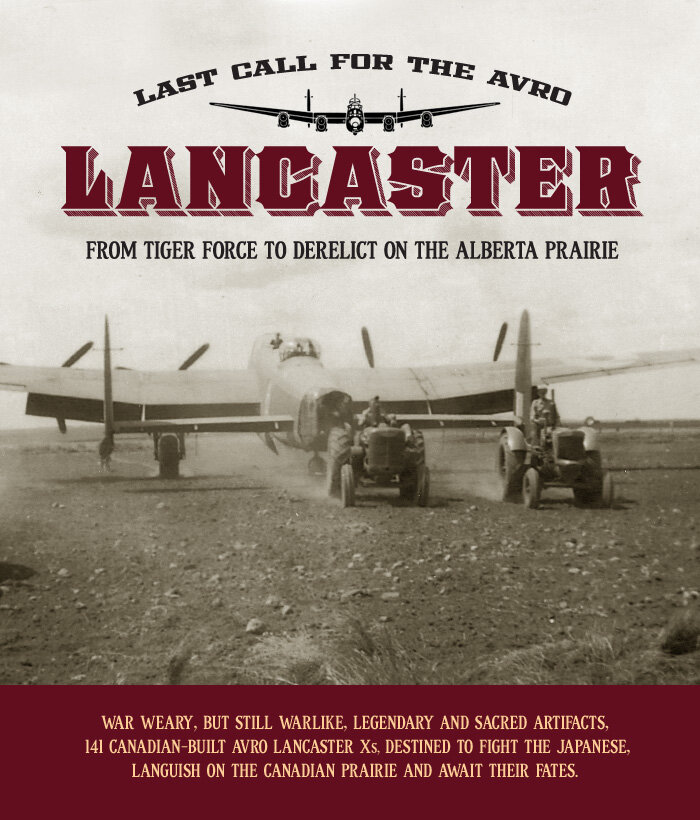
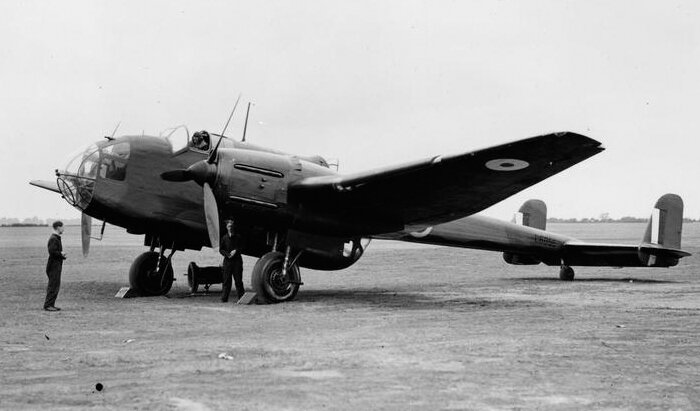

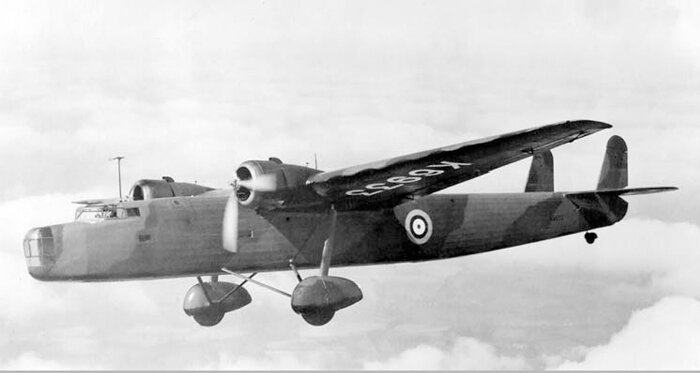





![The last of the piston-engined Vickers City bombers—the Vickers Armstrongs Windsor, named after the great city in Berkshire and the home of Windsor Castle. Only three prototype Windsors ever flew, the type being pretty well eclipsed by later variants of the Lancaster. This photo shows the yellow underbelly and P roundel of experimental aircraft in the RAF during the war. Wikipedia tells us “The Windsor used [Barnes] Wallis's geodetic body and wing structure that Vickers had previously used in the Wellesley, Wellington and Warwick bombers. Instead of doped Irish linen however, a stiff and light skin was used on the Windsor, made with woven steel wires and very thin (1/1000 inch thickness) stainless steel ribbons, doped with PVC or other plastic, specially designed to avoid ballooning. To properly fit the skin to the frame, a tuning fork had to be used. The wings' structure had no spars. Instead, it was a single hollow geodetic tube from tip to tip, passing through the fuselage truss. ... The wing was designed so that the tips had a noticeable droop on the ground, but was straight in flight, so the skin had to be fitted tighter on top than on the bottom to be evenly tight in flight.” The Windsor had many unique features, not the least of which was its tall dagger-board-like tail, pressurized cockpit and gunner positions and four main gear oleos, each extending from an engine nacelle (lower photo). Photo via WarThunder.com](https://images.squarespace-cdn.com/content/v1/607892d0460d6f7768d704ef/1625856013851-8S0D74FH2KW1W9B89MUT/Ottawa29.jpg)



